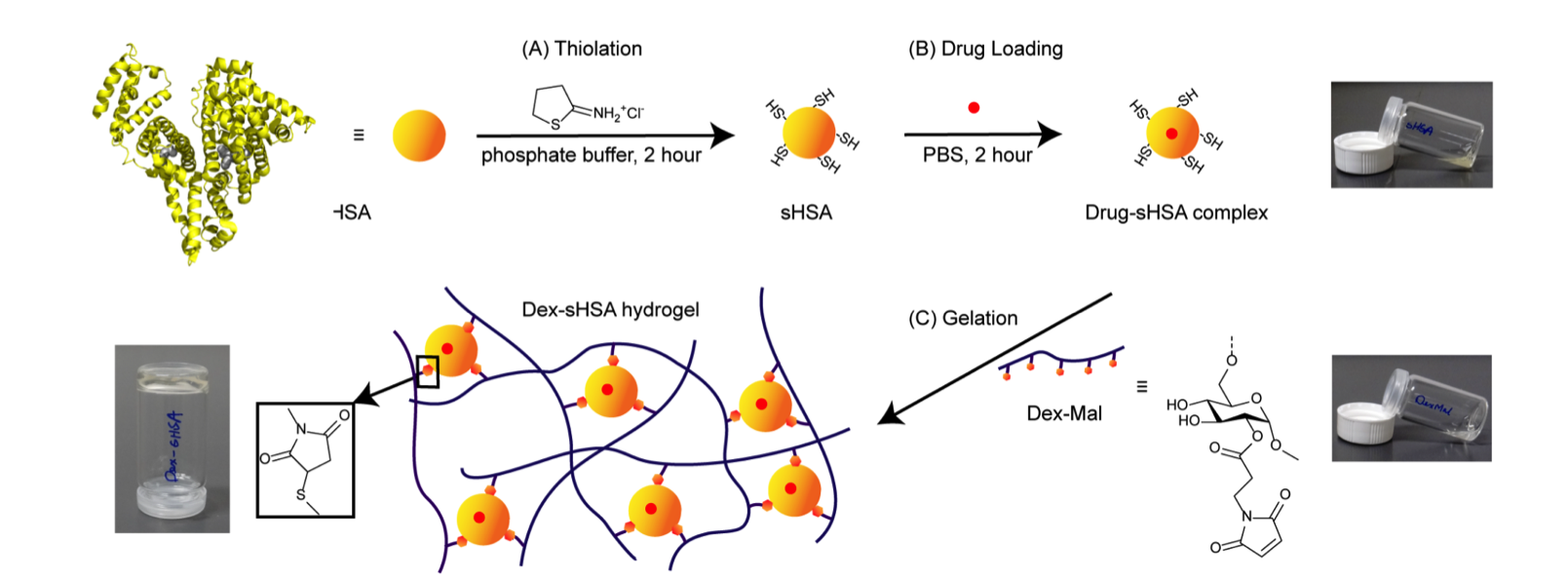Thiolated human serum albumin cross-linked dextran as a therapeutic hydrogel material
-
1
Leiden University, Chemistry, Netherlands
Hydrogels are poised to play an important role in the delivery of small molecule therapeutics, proteins and cells due to their ability to mimic features of native tissue. We here present a facile and benign method to prepare a hydrogel-based drug delivery system, Dex-sHSA, based on dextran and human serum albumin (HSA) as a dual drug carrier and covalent cross-linker. Binding affinity of the albumin protein for therapeutic cargo was conserved in the thiolation step using 2-iminothiolane and subsequently, in the in situ gelation step by a Michael addition reaction to the dextran polymer scaffold. Oscillation rheometry studies demonstrated the formation of a three-dimensional viscoelastic network upon reaction of dextran and the HSA protein. The mechanical properties of Dex–sHSA hydrogel can be tuned by the protein concentration, and the degree of thiolation of sHSA. Sustained release of hydrophobic drugs such as ibuprofen, paclitaxel and dexamethasone from the Dex–sHSA network were shown over one week. Moreover, the delivery of cancer therapeutics from such scaffolds in the presence of MCF-7 cells was evaluated. This albumin-based dextran hydrogel system demonstrates its potential as a macroscale delivery system of hydrophobic therapeutics for a wide range of biomedical applications.

Conference:
10th World Biomaterials Congress, Montréal, Canada, 17 May - 22 May, 2016.
Presentation Type:
Poster
Topic:
Biomaterials for therapeutic delivery
Citation:
Kieltyka
R
(2016). Thiolated human serum albumin cross-linked dextran as a therapeutic hydrogel material.
Front. Bioeng. Biotechnol.
Conference Abstract:
10th World Biomaterials Congress.
doi: 10.3389/conf.FBIOE.2016.01.00027
Copyright:
The abstracts in this collection have not been subject to any Frontiers peer review or checks, and are not endorsed by Frontiers.
They are made available through the Frontiers publishing platform as a service to conference organizers and presenters.
The copyright in the individual abstracts is owned by the author of each abstract or his/her employer unless otherwise stated.
Each abstract, as well as the collection of abstracts, are published under a Creative Commons CC-BY 4.0 (attribution) licence (https://creativecommons.org/licenses/by/4.0/) and may thus be reproduced, translated, adapted and be the subject of derivative works provided the authors and Frontiers are attributed.
For Frontiers’ terms and conditions please see https://www.frontiersin.org/legal/terms-and-conditions.
Received:
27 Mar 2016;
Published Online:
30 Mar 2016.